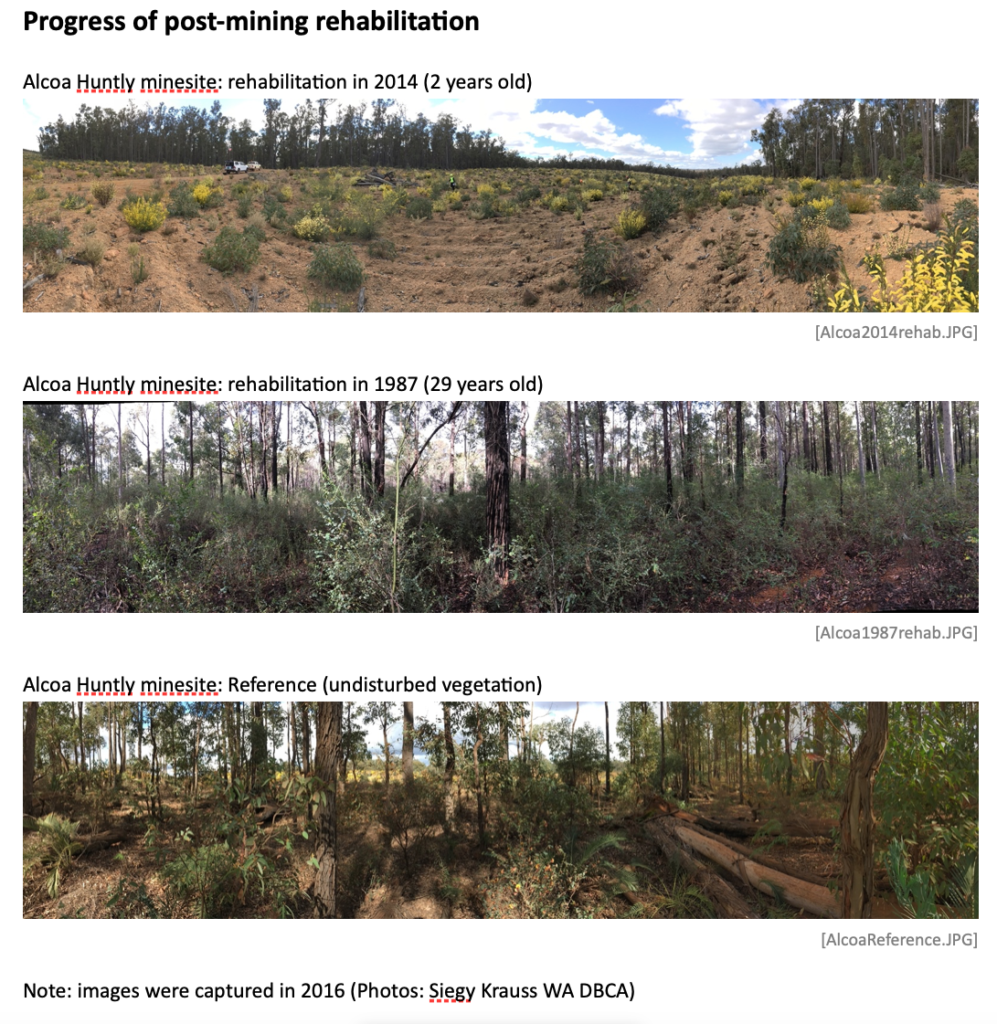The first mine in question was Alcoa’s Huntly bauxite site. There, the post-mining chronosequence sites sampled in 2016 captured rehabilitation ages from 2–29 years. The adjacent reference forest allows to track how the rehabilitation sites are performing.
The second mine was Iluka Resource’s Eneabba mineral sands mine site, where sampling data from 2019 captured rehabilitation ages from 7–38 years, a wide gap that responds to the variability in topsoil storage time and mulching practices.
The third mine was South32’s Worsley Alumina bauxite mine site. There, samples were collected in October and December 2019 and captured rehabilitation ages from 2–28 years old.

According to the researchers, soil microbes are fundamentally linked to the restoration of these degraded ecosystems, helping to underpin ecological functions and plant communities.
With this work, the Flinders team was able to demonstrate a new approach that compared the similarity of rehabilitated soil bacterial communities to nearby reference sites, representing the desired target natural ecosystem.
The research offered a significant step forward in the development of quantitative microbiota-based metrics for measuring rehabilitation success.
“After quite a complex analysis we saw simple patterns emerge. Over time, the rehabilitation sites were increasing in their similarity to the target ecosystems,” Craig Liddicoat, lead author of the paper, said in a media statement. “The key was recognizing that natural ecosystems from just a single location can be quite variable, and that variation needs to be accounted for if we are monitoring the progress of ecosystem recovery towards a target outcome.”
Liddicoat highlighted the fact that his analyses showed that effective rehabilitation can set up a predictable trajectory of recovery, and that, at least in the examples he studied, it can take 40-60 years to reach the target.
“Restoration is technically challenging and requires considerable investment with a broad base of evidence to give the best chance of success,” Liddicoat said. “We recommend our new method to restoration managers who are considering how to incorporate soil biology into their ecological monitoring toolkit.”




